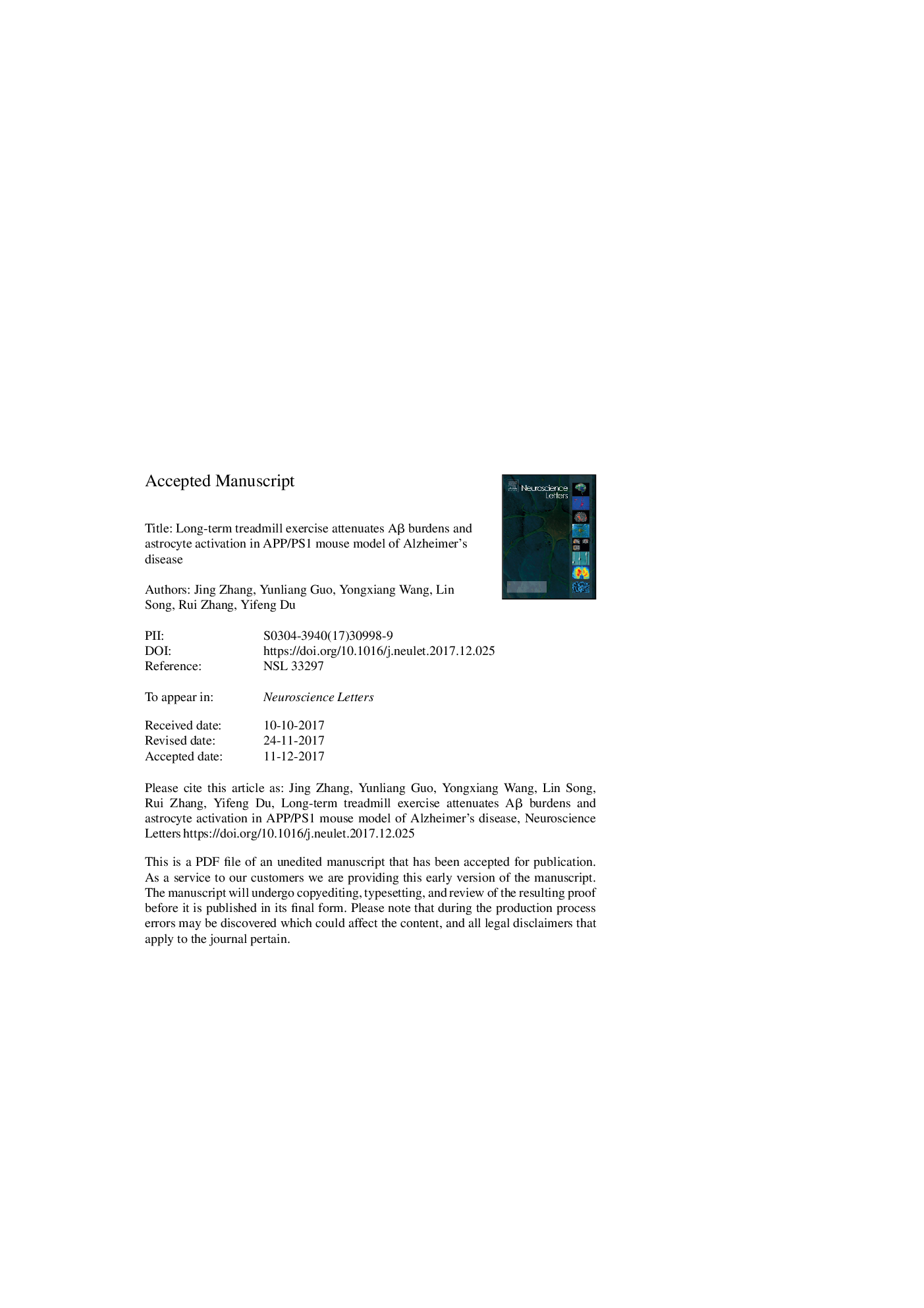| Article ID | Journal | Published Year | Pages | File Type |
|---|---|---|---|---|
| 8841810 | Neuroscience Letters | 2018 | 11 Pages |
Abstract
Alzheimer's disease (AD) is a devastating disease characterized with progressive neurodegenerative disorders in the elderly. Epidemiological and clinical studies reported that lifestyle factors could halt the progression of AD, especially physical exercise. In the present work, we investigated the effects of long-term treadmill exercise on the pathological cascades of AD in APP/PS1 mice. After exercise for 5 months, Aβ deposition was significantly ameliorated in terms of Aβ area fraction, plaque number and size. We also found that long-term treadmill exercise increased neuronal density and attenuated activation of astrocytes. However, the activation of microglia was not affected in APP/PS1 mice treated with exercise intervention. In addition, the amyloidogenic pathway of amyloid precursor protein (APP) metabolism was inhibited, with the decrease of β-site amyloid precursor protein cleaving enzyme 1 (BACE1) and presenilin 1 (PS1). Nevertheless, the nonamyloidogenic pathway of APP metabolism was increased after exercise intervention. The expression levels of insulin-degrading enzyme (IDE) and receptor for advanced glycation end products (RAGE) also declined significantly. In conclusion, long-term treadmill exercise is neuroprotective against Aβ burdens and astrocyte activation, which contributes to the therapy for AD.
Related Topics
Life Sciences
Neuroscience
Neuroscience (General)
Authors
Jing Zhang, Yunliang Guo, Yongxiang Wang, Lin Song, Rui Zhang, Yifeng Du,
